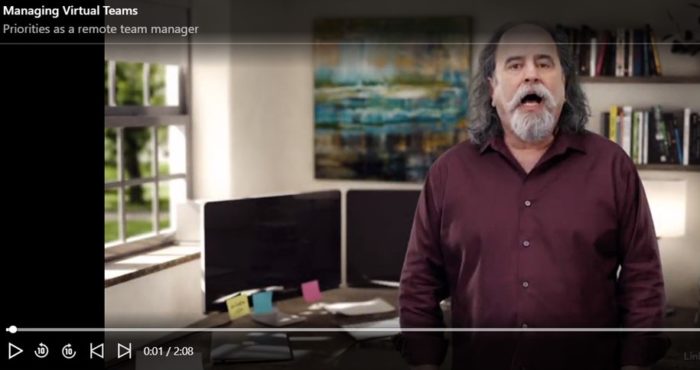Leading and Managing Remotely
Remote working has become a normal part of how we do things at the UoL, just as hybrid working is likely to become in the future. This is a big change for many and these resources should help with how to lead and manage remote working, how to create online content, and how to build and maintain a healthy work-life balance.
Resources

- Managers and Leaders Toolkit - Managing remote working
- Remote Working LinkedIn Learning Collection
- Remote Working and Trust - The Learning Curve (podcast) - Episode 2 - What Makes a Great Leader with Chris Burchell
- See Hybrid Working - Our ways of working
- See OD&PL Managing Remote Working SWAY
- Consider Stepping off the hamster wheel
- Wellbeing and resilience resources
- https://storyals.com/blog/communicate-like-pro-using-microsoft-teams from TIPS community
Tips on leading and managing remotely
Top Tips that have come out of our managing/working remotely surgery sessions:
- Be active outside work; exercise, dog walking.
- Keep a demarcation between work and home; lunch breaks, focus on home activities.
- For some people setting standards working hours and times helps.
- Have regular social check-ins, huddles (5/10 minutes).
- Take a proactive approach to seeing new faces; attend surgeries, workshops, walk new routes.
- Give full attention (eg, lean in online to show listening).
- Get to know the platforms/tools you are using (eg, Teams, Minerva, etc).
- Use the Universities Digital Practice site, and the TIPS community (Teaching, Innovation and Practice in Student education).
- Coping with silence (allowing time for reflection, especially online).
- Follow up issues in one-to-ones.
- Pin top communicators in Chat function in Teams, and keep the Chat function light-hearted.
- Set up Team Channels for non-work related aspects; Pets at Home, Cooking, Whatever.
- Expectations (can they be the same online?)
- Push back, bit by bit, to realign expectations.
- Be open and transparent if there is a need for shifting expectations.
- For some people having a to do list helps keep things on track.
- Take time to consider what brings joy.
- Consider the purpose of your meetings, and who really needs to be there.
- Schedule 1 hr meeting for 50 minutes (to ensure breaks between each).
- Phone people rather than email.
- Ask and listen.
- Use 'aha' and 'appreciation' approach, or 'thank you' and 'gratitude' to set a listening, positive tone for the meeting.
- Share your struggles and successes.
- Develop an attitude of acceptance, appreciation of the small pleasures, gratitude, and mindfulness in the here and now.
When new members of the team start:
- Have informal Chat messaging to help with a sense of belonging.
- Prepare for practical issues; IT, knowledge gaps, not knowing the right people.
- Invite to a range of meetings to help connections and fill knowledge gaps.
- Share screen to talk through new work, processes, tasks.
- Develop some 'How to' videos for reference.
